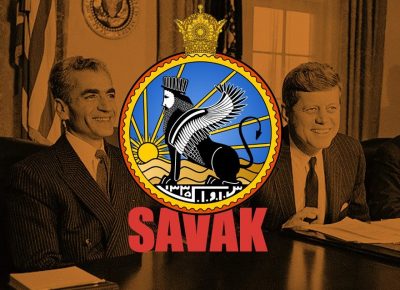Iranian Monarchists Praise the Shah’s Brutal Rule on the Anniversary of His Death

On July 27, 1980, Mohammad Reza Shah Pahlavi finally succumbed to cancer in Cairo, Egypt. In 1953, he was installed as the dictator of Iran after the CIA overthrew the democratically elected government of Prime Minister Mohammad Mosaddegh.
There are a few tributes to the brutal dictator posted on social media ahead of this anniversary. Most are nostalgic for the good old days when the Shah ruled with an iron fist and unleashed his notorious and brutal SAVAK secret police on Iranians opposed to his rule.
O Emperors of the mightiest light
Shahanshah
Spirit of the blest
The Gurdian of children of light
The Aryan Faith
Captain of the hosts of the Lord
Oh King of Heavenly hosts, by the power of God
He who sees God
He who is like God
He who is the Knight of Heaven
Emperor of Gods. pic.twitter.com/HpBEEHuJg9— SPQR (@SPQR73844943) July 26, 2019
As the corporate media dwells on the mullahs, it doesn’t bother to explain how the Islamic Republic of Iran came to be and why. It’s basically ignored. For those interested, a few links follow.
SAVAK is listed on this page as number six of “10 of the Most Brutal Secret Police Forces in History,” right up there with the Gestapo, the Stasi, and the Khmer Rouge’s Pol Pot.
It took a couple decades after the revolution for The New York Times to publish an expose on the Shah’s torture. Years of Torture in Iran Comes to Light.
In 2009, The Inquisitor nominated the Shah “Despot of the Week.”
The Shah and his family amassed a huge fortune—estimated at $20 billion in 1979—said at that time to be “a staggering sum that would probably exceed or at least equal the wealth of any of the other royal families of Middle East Oil-producing states.”
“By 1977 [two years before the Revolution] the sheer scale of corruption had reached a boiling point… Even conservative estimates indicate that such [bureaucratic] corruption involved at least a billion dollars between 1973 and 1976,” according to research by IPFS.
Americans wonder why Iranians chant “Death to America” and “Death to Israel.” Soon after the Revolution, students began compiling an archive of memos, titled “Documents from the US Espionage Den, Iran Embassy—CIA Station 1979.” The documents reveal in detail how the CIA collaborated with SAVAK.
Ya’acov Nimrodi, Israel’s military attaché to Iran prior to the Revolution, admitted Mossad helped build-up and fine-tune SAVAK. In the book The Iran Contra Connection: Secret Teams and Covert Operations in the Reagan Era, Johnathan Marshall, Peter Dale Scott, and Jane Hunter write that Nimrodi was “the Mossad agent who could properly boast of having ‘built’ SAVAK into an efficient if brutal intelligence service.”
There is much more to the story we’re not told as the media continues to demonize the current government of Iran. The rule of the Shi’a theocracy is a direct result of meddling by the United States, Britain, and Israel. The Iranian parliament (the Majlis) elected Mohammad Mosaddegh and his National Front was popular with the Iranian people.
The trouble began when Mosaddegh declared Iran’s oil belonged to the people, not the Anglo-Persian Oil Company.
*
Note to readers: please click the share buttons above or below. Forward this article to your email lists. Crosspost on your blog site, internet forums. etc.
This article was originally published on the author’s blog site: Another Day in the Empire.
Kurt Nimmo is a frequent contributor to Global Research.
Featured image is from the author

